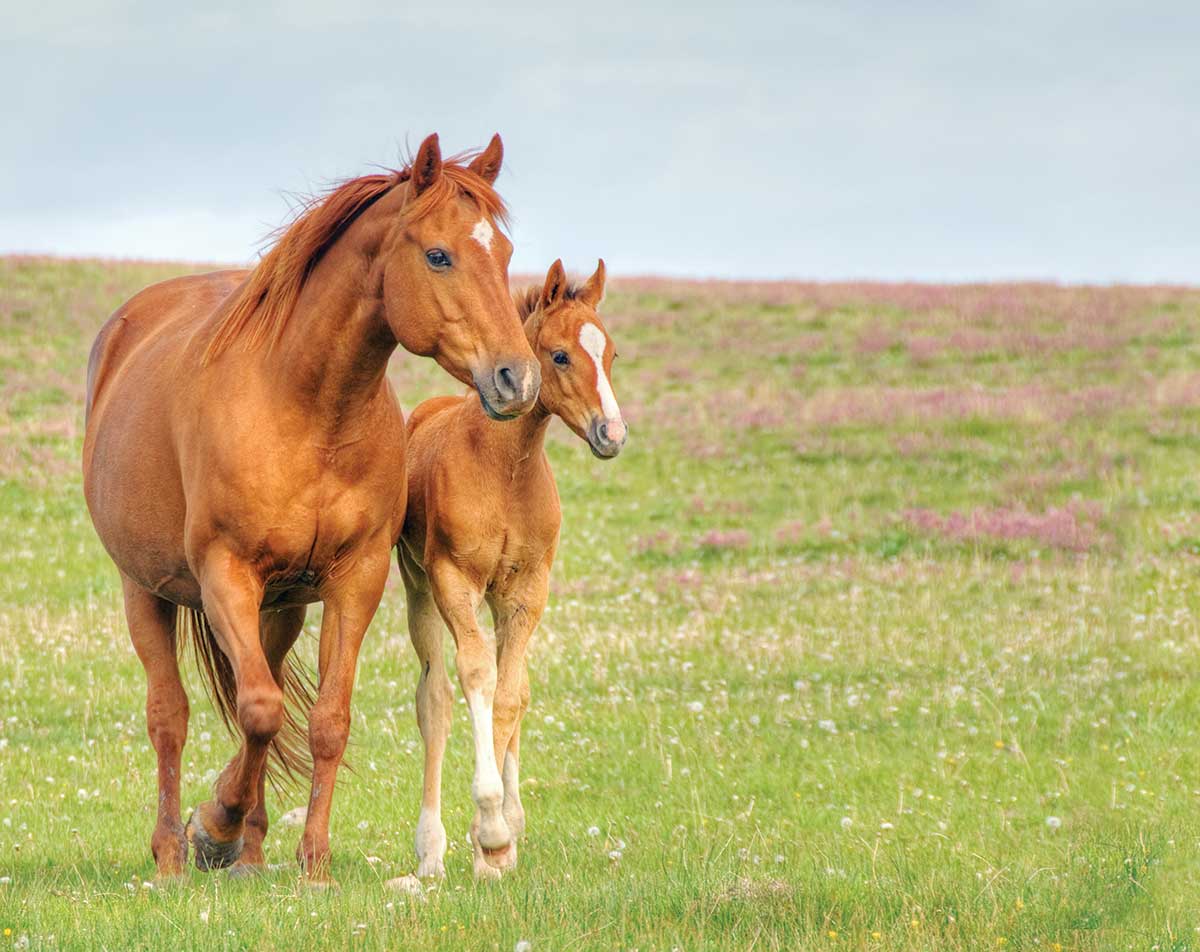
Is your mare troublesome when she’s in season? Does her behavior change for the worse during estrus? Regulating her cycle may provide a remedy.
How Heat Cycles Work
Most mares experience heat cycles during spring and summer months, when days are longer and warmer. On average, your mare will be in heat (estrus) for six days, then out for 15 days in a recurring cycle. During heat, her developing follicles release the hormone estrogen. When she’s out of heat, she’s under the influence of progesterone, the so-called “happy hormone.”
The estrogen released during heat is what prompts her to act in ways to attract a stallion. These behaviors—frequent urination, squealing, tail swishing, threatening other horses—can hamper her trainability and performance.
You may want to control her heat cycle to minimize these behaviors. Or, if breeding is your goal, you may want control when she comes into estrus in order to bring about a desired foaling date. For any heat-cycle management in your mare, you’ll need to work closely with your veterinarian.
Methods of Control
Ways of regulating your mare’s heat cycle include:
• Oral altrenogest. Giving her this synthetic progesterone orally every day will reliably keep her from coming into heat. Once you stop giving it, heat cycles return.
• Injectable progesterone. Produced by compounding pharmacies, these injections are given at intervals ranging from once a week to every 30 days and have varying degrees of reliability.
• Oil in the uterus. Your vet’s placement of a small volume of sterile plant oil into your mare’s uterus at a certain time in her cycle can suppress estrus for 60 days or more.
• Injectable oxytocin. Daily injections of this hormone for a week or longer (generally at a specific point in the cycle) can keep your mare out of heat for up to 90 days.
Bottom Line
Ideally, the method of heat-cycle regulation you choose will be safe, reliable, cost-effective, and reversible—in case you later decide to breed your mare. (For more information, review “She’s an Angel… She’s a Devil… She’s a Mare!” at HorseandRider.com.)






